Snakes are interesting brutes that are very important to keeping nature in balance all over the world.
Even though these reptiles don't have legs, eyelids, or external consciousness, they have some amazing characteristics.
How they move, how they shed their skin, how they look, how dangerous they are, and how big they are. Few animals have been the subject of so many stories and myths.
Since ancient times, these reptiles have been part of numerous cultures, making them one of the most famous animals studied by science. There are more than 3000 species of snakes around the globe, each with its characteristics.
People say that 100-feet snakes can swallow a man whole. But how much of it is true? What are the 10 largest snakes in the world, and how big do they get? Below, we list the top 10 snakes and describe each one. Here are the biggest snake in the world
Top 10 Biggest Snake In The World (2022)
Want to jump straight to my top picks? My favorite biggest snake is Green Anaconda and Reticulated Python.
1. Green Anaconda: 30 Feet Long
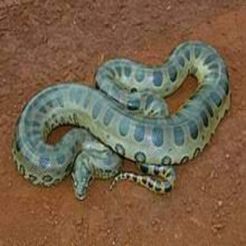
It is the world's biggest snake. Males often have a smaller size than females. People sometimes call them "water boas" because they spend most of their lives in water.
Their name comes from their skin, which is olive green with black dots.
Green anacondas are predators and move faster in the water.
Their eyes and noses are on top of their heads, hiding them under the water while they hunt.
Green anacondas are only active at night. Even though they can hunt during the day, they are best at night because their pits can sense heat. They suffocate and eat whole prey.
These gigantic snakes do not feed on humans, unlike many Hollywood movies have told us. Crocodiles, caimans, tapirs, fish, deer, turtles, and turtles are their main targets.
The female anacondas sometimes eat the males after they mate. They are nonvenomous.
facts
2. Reticulated Python
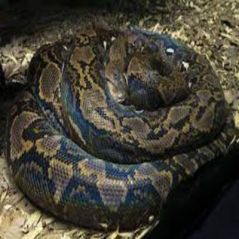
The network-like pattern on its skin is "reticulate," which is also how the animal got its name.
Unfortunately, their gorgeous skin makes them miserable because it's valuable in the skin trade.
The reticulated python lives in southeast Asia. The average reticulated python is usually longer than the average green anaconda.
However, anacondas are wider, stronger, and much heavier than reticulates. Because of this, reticulates aren't the biggest snakes.
Reticulated pythons find food by using their sense of smell and infrared. Like other snakes, they squeeze their prey until it can't breathe anymore and swallow it whole.
They eat rodents, boar, deer, and birds most of the time. Reticulates are aggressive. Thus they're not popular as pets. The reticulated python is nonvenomous.
facts
3. Amethystine Python – 27 Feet Long
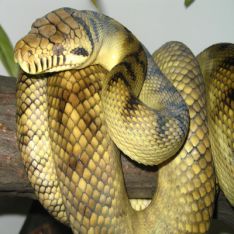
The amethystine python gets its name from the color of its scales, which look like amethyst.
It is the "scrub" python in northern Australia because it lives mostly in the scrublands.
The amethystine python is very adaptable, like its relatives, and its range covers most of Oceania.
Scrub pythons are also solitary animals that usually hunt at night.
Young ones reside in trees, but adults move to the ground. Scrubs can swim well, like most pythons, so they can eat animals that live in water.
Amethystine pythons use the "sit and wait" method to catch prey. It includes remaining motionless in a position where their scales blend into the environment, then striking the target with remarkable speed.
Female amethystine pythons can lay up to 20 eggs each season.
Even though that doesn't seem like much compared to other python species that can lay up to 100 eggs at once, the scrub python's population is stable. Amethystine python is nonvenomous.
facts
4. Burmese Python – 23 Feet Long

The Burmese Python is from Southeast Asia and may weigh more than you.
The Burmese python is famous for how it captures and eats its food. The snake grabs its prey with its sharp, backward-pointing teeth.
It then coils its body around the animal, squeezing it tighter each time it breathes out until the animal stops breathing.
Their flexible jaws can eat animals five times their head size.
Burmese pythons spend time on the ground and in the trees when young. As they become larger, the trees can't hold them anymore, moving to the ground.
They can swim and remain underwater for 30 minutes. Burmese pythons are non-venomous constrictors.
facts
5. Indian Python
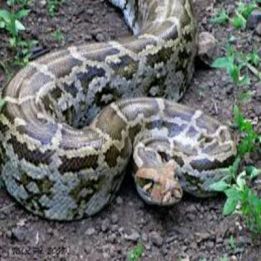
The Indian python may grow to 20 feet long. They weigh roughly 150 pounds, and this creature lives in India, Nepal, Sri Lanka, and Pakistan forests.
The only things this snake eats are small mammals and birds. Like other pythons, it uses its strong jaws to catch its prey and wraps its body around it to suffocate it.
Indian pythons live alone and are only seen in pairs when it's time to mate. They mostly come out at night and live on land.
They can climb well and hang on tree branches. Indian pythons are great swimmers and feel very comfortable in the water, and Indian pythons are shy and move slowly even in their natural environment.
When people attack them, they rarely try to attack back. The Indian python is nonvenomous.
facts
6. King Cobra: 19 Feet Long
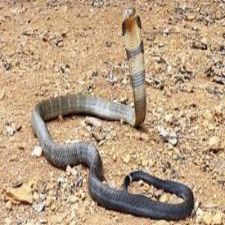
The longest venomous snakes are king cobras. They may grow to 19 feet and weigh 20 pounds.
This dangerous snake eats other snakes most of the time. It lives in India and Southeast Asia.
If this snake thinks you are dangerous, it will stand up straight, show its hood, and hiss loudly. It lives in places like forests and swamps.
And the animal's poisonous bite can kill an elephant. King cobras eat birds, lizards, and small mammals. They can also end up as dinner. The mongoose, a type of mammal, loves to eat snakes.
When threatened, king cobras behave tough. They "hood" themselves by enlarging their ribs and neck muscles. The hood enlarges the snake.
Cobras may be violent when hungry or threatened, yet they know how to make their family feel at home. They're the only snakes that make nests for their eggs.
facts
7. African Rock Python: 16 Feet Long
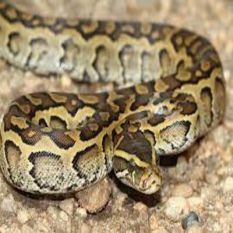
The African rock python can get up to 16 feet long. It may weigh 250 pounds and live in Africa's savannas and grasslands.
This snake uses its strong muscles to wrap its big body around its prey and suffocate it, and people have seen these snakes eat
crocodiles, warthogs, antelope, and other large animals.
It is one of the six biggest snakes in the world, and people are afraid of it, even though it rarely kills people.
African rock pythons have a thick body with spots of different colors that often form a wide, wavy stripe. The body's marks can be brown, olive, chestnut, or yellow, but they fade to white on the bottom.
The top of these snakes' triangular heads has a dark brown "spearhead '' with a yellow outline. The subocular mark is a distinctive triangle-shaped mark under the eye.
The African rock python has small, smooth scales, just like all other pythons. The pits around the lips can sense heat to find warm-blooded prey even when it's dark. The African rock pythons are nonvenomous.
facts
8. Black Mamba
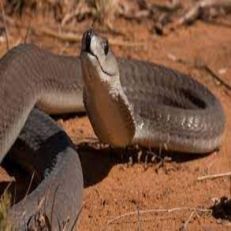
This venomous snake lives in African savannas.
The skinny black mamba weighs only about 3 pounds, making it easy for its long body to move at 12.5 miles per hour.
The population of this Least Concern reptile is stable.
This snake is very venomous. People think they are very aggressive and have a lot of poison, which is how they got their name.
Mambas normally run away from humans rather than bite. They like to find places to hide, so they sometimes end up in South African homes by accident.
They're brownish despite their name. People call them "black" because the inside of their mouths are black, which makes them look dangerous.
They eat small rodents and use venom to paralyze them before swallowing them whole.
facts
9. Boa Constrictor: 13 Feet Long
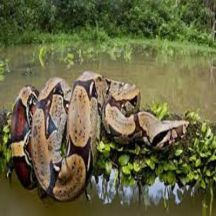
The Boa Constrictor live in tropical Central and South America. Most boa constrictors live alone.
Boa constrictors are strong snakes and sneaky hunters. The boa usually hunts by sneaking up on animals like rats, monkeys, birds, or wild pigs.
The snake swallows its food whole. Strong stomach acids help digest food. After a big meal, a boa doesn't eat for weeks. A boa constrictor grows for 20 to 30 years of its life.
Mother boas usually have about 60 babies at once. A baby boa is already independent when it is born. It knows how to hunt from the moment it is born.
As a baby boa grows, its diet changes. The larger it gets, the bigger it likes to eat. Boa constrictors are non-venomous snakes.
facts
10. Papuan Olive Python: 13 Feet Long
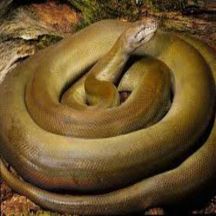
The Papuan Olive Python is a snake that lives in savannas and rainforests. But the Papuan Olive Python isn't as heavy as some other pythons.
It has a thick, stocky body. Short, blunt head slightly broader than the body.
Dorsal scales are brown or gray-brown and lighter on the lower flanks and upper surface. The bottom, lips, chin, and throat are lighter in color.
The eyes are about medium size, and the pupils are straight up.
Some specimens have a dark stripe behind the eye. It mostly eats mammals.
Usually, pythons can smell a forest floor mammal's typical path and wait in an ambush to attack. Papuan Olive Python is a nonvenomous snake.
facts
11. King Brown Snake: 11 Feet Long
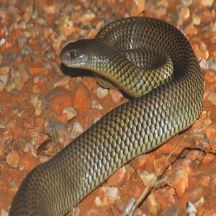
The King brown snake is a highly venomous snake that dwells in most of Australia's mainland, excluding the extreme south and southeast coast.
The King Brown snake is the largest and most powerful venomous snake in Australia; its head is broad, and its snout is smooth.
These highly adaptable snakes live in most
Australian environments except rainforests and humid or cold climates.
Depending on the temperature and humidity, the king brown snake can be active at any time of the day or night.
When they live near humans, they hide in soil cracks, logs, rock piles, timber, and burrows.
facts
12. Yellow Anaconda: 11 Feet Long
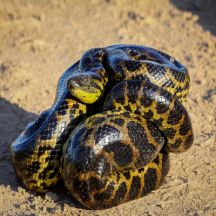
Yellow anacondas are smaller than green anacondas, but they still average 11 feet long.
The Yellow Anaconda lives in southern South America, from Bolivia and Brazil's Pantanal to Paraguay and Argentina's Parana River Basins.
Males are smaller than females. Their yellow coloration ranges from golden to greenish, with random black or dark brown spots for camouflage.
Because of its aquatic lifestyle, the snake has a distinctive face compared to other reptiles.
Their eyes and nostrils are on top of their heads, making hunting easier along covered riverbanks. They are nonvenomous snakes.
facts
13. Eastern Indigo Snake: 9 Feet Long
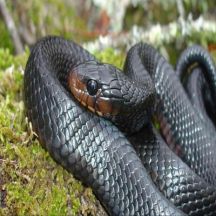
Eastern indigo snakes are large, non-venomous snakes living in the United States southeast.
It's the longest snake native to the United States.
The common name Eastern Indigo Snake comes from the fact that this species has large, smooth scales that look iridescent purple in sunlight.
Male adults have scales that have a partial keel down the center of their backs.
Hatchling Eastern Indigos may have cream speckling forming indistinct lateral bands.
They eat lizards, small alligators, turtle eggs, birds, small mammals, fish, frogs, toads, snakes, and turtles. Young eastern indigo snakes eat invertebrates.
facts
Conclusion
So this was all about the top 10 biggest snake in the world. Snakes have always been fascinating animals who love to live in the wild away from humanity.
We are afraid of them, however, we are also curious about these fascinating reptiles. Hope this article will help you understand more about these snakes.
Frequently Asked Question
Q1. What is the 1 biggest snake in the world?
The world's biggest snake, the Green anaconda, can grow to 30 feet long and weigh 550 pounds. A green anaconda would be roughly the same length as a regular school bus if extended to its full length.
Green anaconda males are often smaller than females. The world's largest snake eats wild pigs and deer. They wrap their prey in their massive bodies and squeeze it till it dies.
Q2. What are the 3 biggest snakes in the world?
Green Anaconda
29 feet long and 550 pounds, the green anaconda is the undisputed king of snakes.
The Reticulated Python
A reticulated python is the second-largest snake in the world, with a length of 29 feet and weights up to 595 pounds.
The Amethystine Python
It can reach a length of 27 feet and a weight of 33 pounds. Females are frequently bigger than males.
Q3. Where are the biggest snakes in the world?
The snake that claims to be the biggest in the world lives in Brazil's Amazon rainforests and swamps. They are predators who capture deer and wild pigs by wrapping them with their massive bodies and crushing them until they die.
Q4. What is the biggest snake alive right now?
The biggest living snake in the world is the green anaconda. A green anaconda would be roughly the same length as a regular school bus if extended to its full length, and usually, the males are smaller than the females.
Green anacondas are aquatic. To help them see and breathe while swimming, their nose, and eyes are on the top of their heads. They live in flood-prone locations either in water or burrow into the mud during the dry season.
Here are my best picks:
Also Read: Check out my reviews of the best image editing software, the top choices for video editing software, and my full guide to start a blog for beginners.


